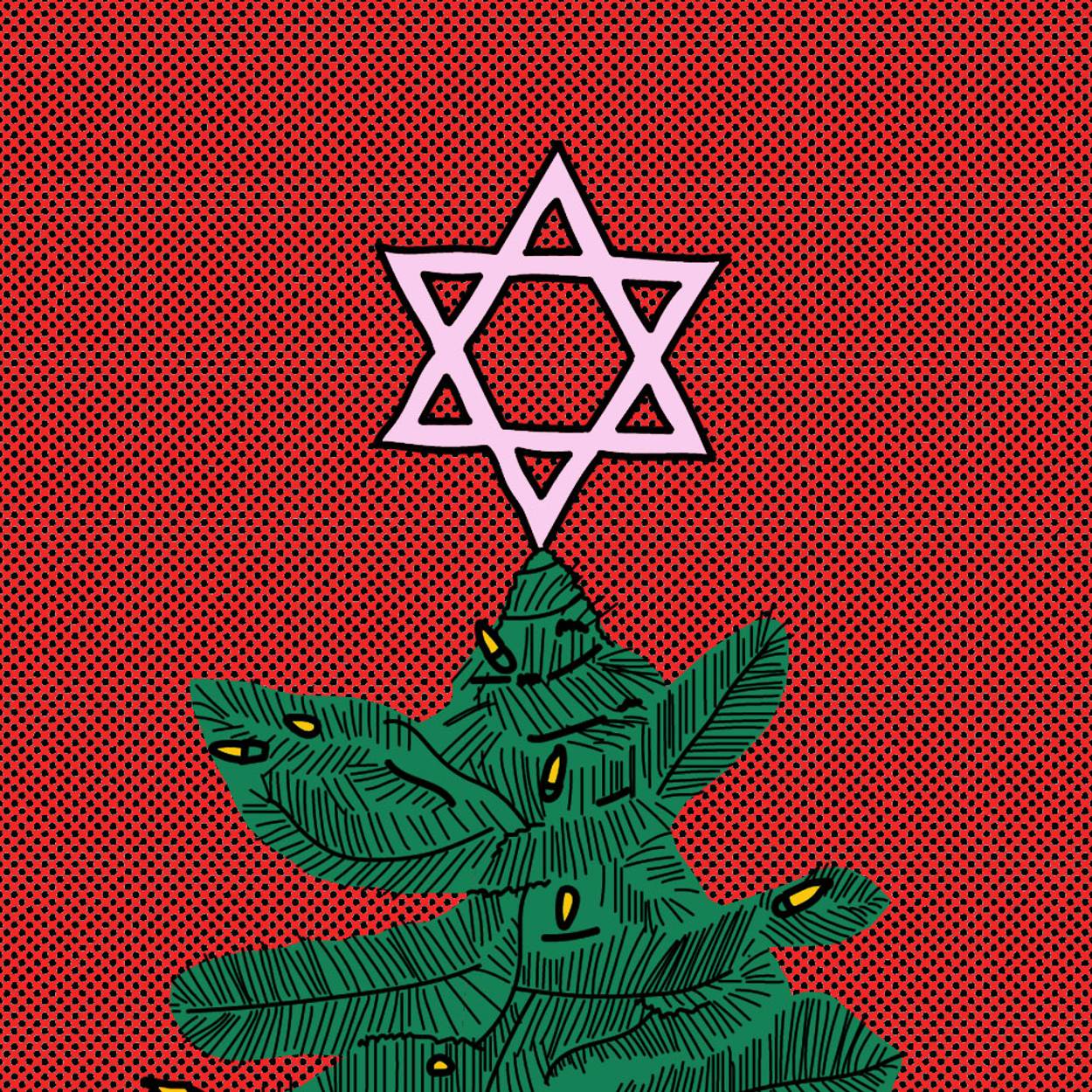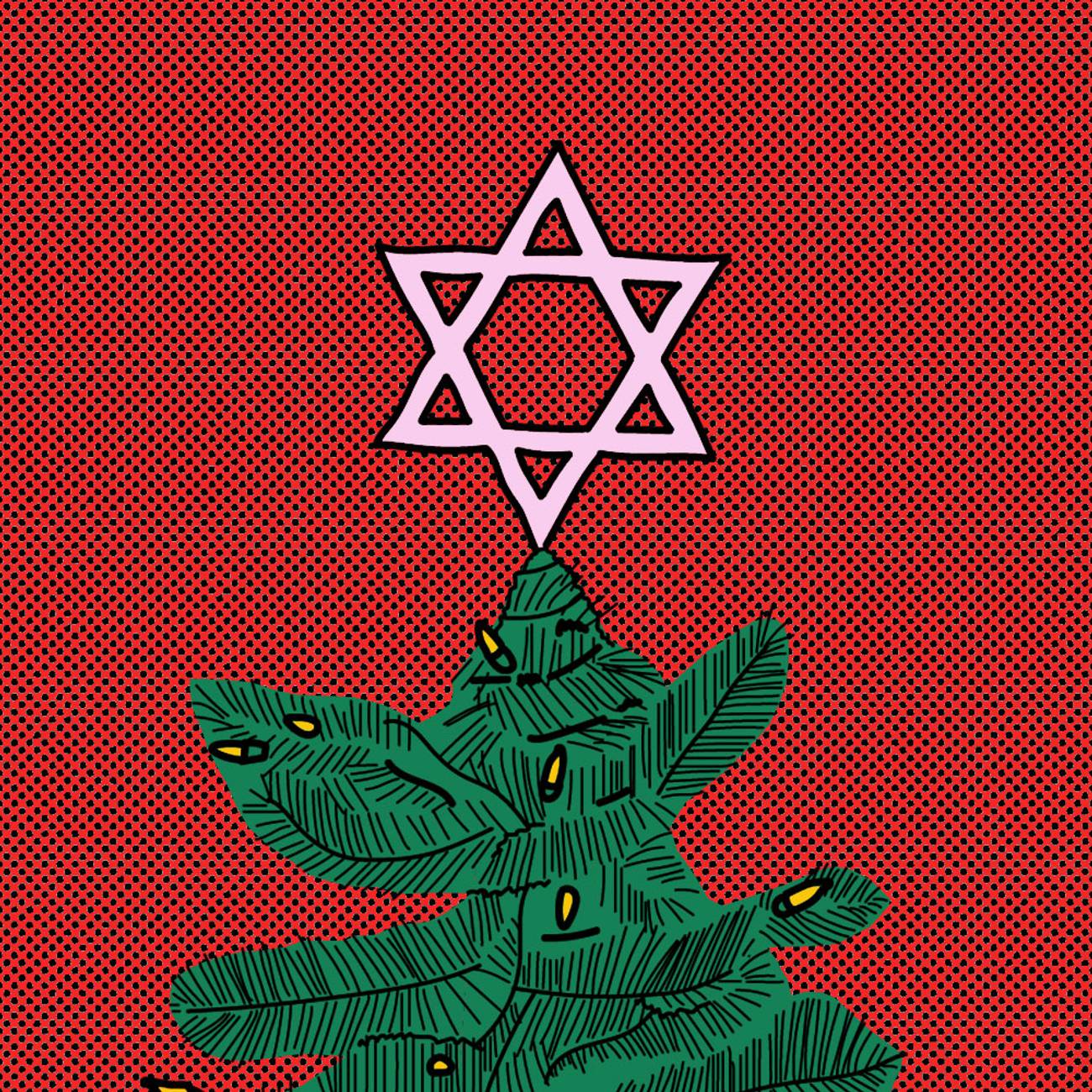Why the Rabbi’s Daughter Has a Christmas Tree
How I came to embrace my husband’s holiday




When I was about 7 or 8, I was so desperate for a Christmas tree that when I found one discarded by the curb at the end of December, I dragged it home. I was still young enough to believe that it was finances and not faith that had kept Mom and Dad from getting us a tree of our own.
“We’re Jewish,” they reminded me. “Jews don’t have Christmas trees. And it wouldn’t look right for the rabbi to have a Christmas tree in a house that the temple owns.”
This conversation took place on the front steps. I wasn’t allowed inside until I dragged the tree back up the street to where I’d found it, because it also wouldn’t look good to have a discarded Christmas tree outside the house that the temple owned.
The following year I came up with a workaround that involved my menagerie of Schleich animals and plastic trees, which I curated as if they were an exhibit at the Museum of Natural History. I borrowed a couple of dime-sized shiny ball ornaments from my Catholic best friend. For tinsel I used dental floss—or maybe it was yarn. Mom and Dad didn’t notice, which meant I could have a Christmas tree forever.
It didn’t occur to me that a day would come when I would no longer want a Christmas tree, that I would find the idea as wrong as my parents did. I remember the exact moment it happened: Mom, my sister, and I were visiting some wealthy temple members—I’ll call them the Tannenbaums—for afternoon tea during Hanukkah. Prominently displayed in the Tannenbaum living room was an artificial table-top tree, a white, fuzzy, furry-looking fire hazard sporting shiny ball ornaments strikingly similar to the ones on the miniature molded plastic tree atop my bookcase.
A Christmas tree doesn’t belong in a Jewish house.
Mrs. Tannenbaum called it a Hanukkah bush. In the privacy of our car on the way home, Mom called it a travesty. “It’s a Christmas tree,” she scoffed. “And a Christmas tree doesn’t belong in a Jewish house.”
Had I been aware that even Theodor Herzl had a Christmas tree, I would have defended the Tannenbaums (and myself) by explaining to Mom that many wealthy German Jews who had been in the United States for generations had adopted the tradition, as had more recent landsmen desperate to assimilate. But I was decades away from that knowledge, and the disdain in Mom’s voice shamed me so profoundly that the first thing I did upon returning home was to strip the Schleich and vow to never again have a tree in my house.
Even after I fell in love with a non-Jewish man, I maintained my no-tree policy. As with any marriage—interfaith or otherwise—Dave and I made compromises. For me, the biggest was that I agreed to raise our children in his hometown: Edmonton, thousands of miles and a border away from the tightknit Jewish community where I grew up in New York state. Dave’s was agreeing that we didn’t have to have a Christmas tree as long as we lived in Edmonton and could celebrate with his parents, in the house where he grew up. We made the deal shortly before our wedding in 1992.
It never occurred to me that when we had children, they would consider Christmas their holiday. At home we observed Jewish holidays. On Shabbat we lit candles and blessed the wine and homemade challah. I brought Elizabeth and Noah to Shabbat services and Hebrew school, and both had b’nai mitzvah ceremonies. The only time they went to church was when my mother-in-law signed them up for a weeklong day camp one year when they were in elementary school.
Dave isn’t religious but he loves celebrating Christmas, and he wanted to share his favorite parts of the holiday with his children. When Elizabeth and Noah were young, he helped them write a letter to Santa every year. They’d leave it on a tray by the fireplace, along with cookies and milk. After tucking the kids in, Dave would disguise his handwriting and leave a letter next to the empty plate and glass, where Elizabeth and Noah would discover it on Christmas morning before we went to their grandparents’ house for brunch and gifts.
I can’t remember the first time Elizabeth asked why we couldn’t have a tree, only that she was young enough that she was satisfied when I pointed that we were Jewish and that Grandma and Granddad had a tree and depended on her and her brother to help decorate.
As she got into her late teens and 20s, that answer became less acceptable.
“It’s my house, too,” she would point out, but Dave and I stood our ground: As long as we could celebrate Christmas at his parents’ house, we wouldn’t have a tree.
Still, every once in a while he would make a comment about how a Christmas tree was a pagan symbol, that it wasn’t religious at all, that plenty of people who didn’t celebrate the holiday had trees.
“It’s called a Christmas tree,” I’d remind him, and that would end the discussion.
In the early days of our marriage, I couldn’t or didn’t want to see far enough into the future to a time when we wouldn’t have Christmas at his parents’ house. COVID-19 changed that. Our province, Alberta, went into lockdown on Dec. 8, 2020. No indoor gatherings were allowed. The kids wouldn’t be able to go to their grandparents’ house to decorate a tree, much less open presents over brunch on Christmas morning. For the first time in our marriage, we’d be on our own for the holiday.
Instead of trying to imagine a Christmas tree in my living room, I tried to imagine what it would be like if I couldn’t observe my holidays in my house, if I couldn’t light Shabbat candles, invite friends over for Rosh Hashanah dinner, host a Seder, decorate the house for Hanukkah. It wouldn’t feel like my home.
That’s why, when Elizabeth insisted shortly after the lockdown announcement that we had to have a Christmas tree, I didn’t say no.
“Take it up with Dad,” I said. “If you guys want a tree, go ahead, but I don’t want anything to do with it.”
I told myself my hostility was a function of my fear of being left with the care and feeding of the tree, not so far-fetched given that Dave, a biochemist, is so wrapped up in his research that household duties inevitably fall on me. But he surprised me: Not only did he and Elizabeth order a tree, they put it up, and he took it down before the middle of January.
Having a tree in the living room was disconcerting. Dave and Elizabeth staged it in front of the picture window. I thought of hanging a sign, “This is a Jewish house,” in case anyone got confused when they saw the tree coexisting with the mezuzah on the front door and the hanukkiah decal in the window. I contemplated explaining that the tree was not my idea. But in the end, I realized the only person troubled by the juxtaposition was me.
I plan to be more gracious this year. I still don’t believe a Christmas tree is a pagan symbol, nor do I think one belongs in a Jewish house. But after 29 years of marriage I’m ready to admit that ours isn’t a Jewish house: It’s a house in which one of the inhabitants is Jewish and one isn’t. And those people love and respect each other. And when you love and respect someone, it feels really good when they embrace what you embrace. For 29 years, Dave has embraced my holidays. Now it’s time for me to embrace his, at home.
Debby Waldman is a writer and editor in Edmonton, Alberta.